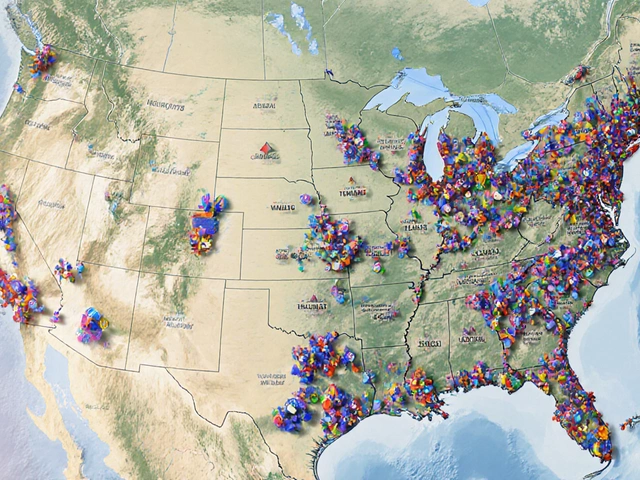It’s pretty wild how often you see charities claim, “100% of your donation goes to the cause.” It sounds amazing, right? You want your money to help feed kids, plant trees, or house families—not pay for someone’s new office chair. But does a true 100% charity actually exist? Spoiler: it’s a bit more complicated than those catchy ads make it sound.
If you’re serious about making your dollars go the distance, you need to know what happens behind the scenes. Most organizations need to pay for stuff like staff, websites, fundraising, or even electricity. Some cover these costs through separate funding or wealthy donors. Others use volunteers to keep expenses low. But can any charity honestly say every single penny you give reaches the cause?
I’m not here to crush dreams, but here’s the deal: Very few big charities really pull off the full 100% claim. Sometimes, a family foundation or famous philanthropist will cover all admin costs so your gift is untouched. More often, it’s small or new groups, run mostly by volunteers, that can keep this promise. If you want to make sure your cash is used exactly how you hope, you’ll need to do a little detective work.
Ready to get the real story on these charities and learn how to spot the ones that fit your values? Let’s get into what makes a charity transparent, how you can dig up the facts, and smart ways to make your time and money count.
- The Myth of the 100% Charity
- How Top Charities Really Use Donations
- Finding Truly Transparent Charities
- Tips for Effective Giving and Volunteering
The Myth of the 100% Charity
Every time you dig into charity websites, you’ll find a glossy promise: “100% of your donation goes to the cause.” As feel-good as that sounds, charities aren’t magic. Every organization, big or small, has basic bills to pay. Think things like computers, phone lines, rent, or postage. So how can some claim to send every dollar straight to where you want it to go?
Here’s what’s really happening: when a charity advertises the 100% line, it usually means someone else—like a major donor, a company, or the charity’s founders—pays all those behind-the-scenes expenses. Sometimes, a charity runs on mostly volunteer help and barely spends a dime on overhead. But this is rare, especially as charities grow. Take DonorsChoose and The Against Malaria Foundation, for instance. They’ve managed to get outside funding just to handle their costs. That means when you donate, your cash really does support classrooms or nets for malaria prevention, not office supplies. But even these groups list all extra expenses right in the open.
Let’s be honest: true 100% charities are the exception, not the rule. The charities with slick marketing campaigns aren’t always fully transparent about what “100%” really means. Some quietly deduct credit card fees or third-party processing costs, even if admin bills are covered. A quick look at most IRS 990 forms shows: few charities actually spend 0% on operations year after year.
Check out some recent stats in the table below. These numbers show how much of each donation actually reaches programs for a few well-known charities—compared to the elusive 100%:
| Charity | Goes to Programs | Overhead/Admin |
|---|---|---|
| Direct Relief | 99.4% | 0.6% |
| Charity: Water (using The Well model) | 100% | 0% (The Well covers costs) |
| Doctors Without Borders | 88% | 12% |
| American Red Cross | 90% | 10% |
If you really want your entire gift reaching a cause, pick smaller efforts, grassroots projects, or groups backed by outside funders. But remember, sometimes the cost of good results is paying for solid staff and working websites. Looking past the slogan and into the numbers is what sets smart supporters apart.
How Top Charities Really Use Donations
This is where things get real. Most big-name charities can’t honestly say every single penny of your donation goes to direct help. They just have too many moving parts. Let’s break down where your money usually ends up so you know what happens after you hit that “donate” button.
Charities usually spend money in three places:
- Program Expenses: This is the cash that goes straight to what the charity promises to do—say, building wells, buying food, funding cancer research, or running education programs.
- Administrative Overheads: Think salaries, rent, software, and paperclips. Not very exciting, but someone’s got to keep things organized and legal.
- Fundraising Costs: This covers the emails, ads, and events that drum up more donations. Without this, most charities would struggle to survive.
If you look at reports from groups like Charity Navigator or GuideStar, you’ll see they recommend a solid charity should put 75% or more of expenses toward programs. Anything below 65%? That’s a red flag.
Here’s a quick glance at how some well-known charities actually split every $1 they get:
| Charity | Program | Admin | Fundraising |
|---|---|---|---|
| Direct Relief | 99% | 0.4% | 0.6% |
| Feeding America | 98% | 1% | 1% |
| Doctors Without Borders | 88% | 1% | 11% |
| American Red Cross | 90% | 3% | 7% |
You’ll notice that very few get close to spending 100% on programs. It’s rare because most groups need at least a tiny bit for coordination and to keep donors in the loop.
Sometimes, “100%” means something different behind the scenes. Take Charity: Water, for example. They made a splash by promising that 100% of public donations go straight to clean water projects. But here’s the catch—they run a separate “Well” of private donors who cover all their admin and fundraising bills. That’s super-transparent, but not every charity can pull off a big-money setup like that.
If the charity doesn’t talk about where each dollar goes, that’s usually a warning sign. Look for ones that post yearly financial audits or break down expenses in plain language right on their site.

Finding Truly Transparent Charities
If you want your donation to do what you expect, looking for transparency is way more important than just chasing that 100% claim. Some charities are up-front and detailed about how they use your money, and that honesty actually matters more for long-term impact. But how do you spot the real deal?
First, check out watchdog groups like Charity Navigator, GiveWell, and GuideStar. They break down charity expenses: what goes to programs, what funds admin costs, and if the group provides detailed financial reports. If a charity hides their numbers or you have to dig to find a financial statement, that’s a big flag.
Certain organizations—like charity: water and Against Malaria Foundation—are famous for promising that all public donations go to projects, thanks to separate fundraising for their own expenses. Here’s how some known charities stack up:
| Charity | Claimed Donation Use | How They Fund Overhead | Transparency Score (Charity Navigator) |
|---|---|---|---|
| charity: water | 100% to clean water projects | Private donors cover admin costs | 97% |
| GiveDirectly | 90%+ goes directly to recipients | Minimal staff; grants for admin | 100% |
| Against Malaria Foundation | 100% to bed net distribution | Separate donations for operations | 100% |
| Feeding America | 98% to program expenses | 2% for admin & fundraising | 98% |
Want to check yourself? Here’s what to look for:
- Easy-to-find annual reports with budget breakdowns.
- Facts about how they cover salaries, rent, and fundraising (not just big promises).
- External ratings from sites like charities (that check transparency and effectiveness).
If you’re ever stuck, email the group. Ask them, “How much of my donation goes straight to the cause? How do you pay your overhead?” Honest charities should reply quickly and clearly, without complicated jargon.
Remember: the most effective nonprofits might spend a small slice on admin just to stay organized and make an even bigger impact. The key is knowing exactly how your money is being used and supporting groups that don’t keep secrets.
Tips for Effective Giving and Volunteering
If you want every dollar or hour to truly matter, you’ve got to get practical. Forget impulse donating just because a charity has a sad commercial or a celebrity spokesperson. There are better ways to make sure your money or time goes as far as possible.
- charities should show clear breakdowns of where donations go. If you search websites like Charity Navigator, GiveWell, or GuideStar, you’ll find ratings and transparency info right away. Top-rated charities make their financials public, so you can see what percent goes to programs versus administrative stuff.
- Ask directly about admin costs. If a group says 100%, dig a little deeper and check if that means all public donations, or does a separate donor cover costs on the side. Don’t be shy—they should have real answers and proof.
- Want the best bang for your buck? Small, local charities often have lower overhead, especially if they’re volunteer-run. Reach out, visit in person, and even ask to see their annual reports if they have them.
- Don’t ignore impact reports. Good nonprofits will track their results—not just say how many dollars they raised, but exactly what those dollars did. Look for stories, numbers, and specific achievements.
- If you want to help but you’re low on cash, your time matters. Charities often struggle to find reliable volunteers, especially for unsexy jobs like data entry or event setup. These roles aren’t glamorous, but they keep things running.
If you’re curious how much impact your dollars have, sometimes the numbers say it best. Here’s a quick look at what some leading organizations reveal about donation usage:
| Charity Name | % to Programs* | Notes |
|---|---|---|
| Direct Relief | 99% | Admin costs are privately funded |
| GiveDirectly | Over 88% | Shows direct cash transfers’ impact |
| MAP International | 98% | Donations fund medicine deliveries |
*Data pulled from each charity’s latest annual report and Charity Navigator (as of April 2024).
Here’s another quick tip: automatic monthly donations are a huge win for non-profits. It gives them stable funding, lets them plan better, and often means lower fundraising fees. And don’t forget to check if your workplace does donation matching—some companies will double what you give. That’s free money, right there.
The bottom line? A little research—and sometimes a quick phone call or email—goes a long way. Don’t just hope your gift helps. Know it. Take these tips out for a spin and see how much more your giving (and volunteering!) adds up.






